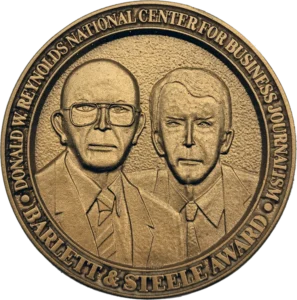Last fall, the new CEO of Starbucks, Brian Niccol, announced the coffee chain would be implementing big changes in its North American stores throughout the next year in an effort to turn around the company and “get back to its roots.” Let’s talk about some of those plans and how it isn’t the first time the company has pledged to return to its core mission.
Back to Starbucks
In their first-quarter filing, Niccol commented that the company is already seeing a positive response to their “Back to Starbucks” efforts and that these changes will “solve our underlying issues, restore confidence in our brand, and return the business to sustainable, long-term growth.” If that phrasing sounds familiar, that’s because Starbucks also made a pledge to return to its roots in 2008. This was after several years of rapid expansion that resulted in competing locations and too few well-trained employees. The rapid expansion meant that their store designs became very cookie-cutter and sterile, according to their own admission, and diminished the true “Starbucks Experience.”
The Back to Starbucks initiative is focused on reviving what makes Starbucks, Starbucks: the experience. The forthcoming changes include simplifying the menu, bringing back the condiment bars, improving staffing training and retention, removing the extra cost for milk alternatives, using ceramic mugs, offering free refills, and purchasing 200,000+ sharpies for baristas to add that personal touch to your coffee cup. All of these changes touch on a key part of Niccol’s four-part strategy: to reestablish Starbucks as the community coffeehouse and make the chain once more a “third space.”
The third space
Sociologist Ray Oldenburg created the term “third space” to describe a place outside of a person’s home (first space) or work (second space) where people can converse and connect with others in their community at little or no cost. Oldenburg believed third spaces were fundamental to democracy as they promoted social equity, provided a space for grassroots organizing, and encouraged social connection. Churches, cafes, libraries, parks, bars, and coffeehouses are all examples of third spaces.
The original popularity of Starbucks is largely attributed to the fact that it was a third space where people could “relax and enjoy the small, affordable luxury of a special coffee beverage.” It was the Starbucks “experience” that made the brand so successful. In his first week as CEO, Niccol stated that he wanted the stores to once again be “inviting places to linger, with comfortable seating, thoughtful design and a clear distinction between ‘to-go’ and ‘for-here’ service.” At least for paying customers.
A couple of weeks ago Starbucks announced a new code of conduct for their stores. This new code of conduct reversed the open-door policy they established in 2018 which welcomed anyone to use their facilities, including the restroom, whether they made a purchase or not. Some customers have already noted that this new policy doesn’t match Starbucks’ mission of being a welcoming, community-orientated coffeehouse.
Is it a pledge or a marketing strategy?
As mentioned, this isn’t the first time the company has made the pledge to return to its core values and missions. The previous pledge in 2008 was found to be very successful for the company and by 2014, the company was back on track to delivering strong financial results. However, it was only a few years later that headlines started asking if Starbucks had once again lost its way. This brings us back to today with a renewed pledge to return to its roots.
Starbucks isn’t the only company making a pledge to return to its roots. Nike’s new CEO wants to bring the company back to its sports roots by putting the “athlete at the center of every decision.” Last summer, Etsy stated it wanted to get back to its artisan roots, while Boeing claimed it would once again return to its engineering roots.







